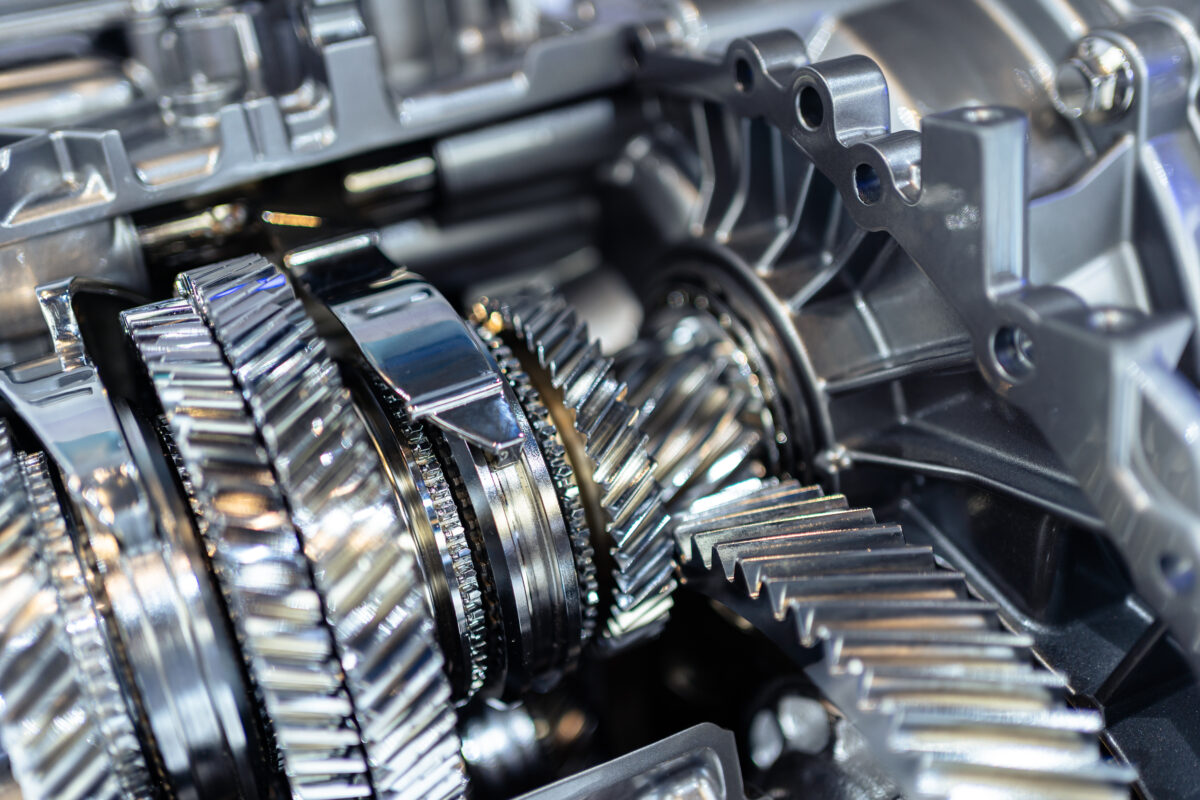
Automatic Transmission Brief History
The First Automatic Transmission:
Just over 100 years ago, manual transmissions were the only option for drivers until the Sturtevant brothers of Boston attempted the first automatic transmission in 1904. Weights and bands operated their two-speed “horseless carriage” gearbox. However, the automatic transmission they created was often unreliable as weights quickly fell apart, causing the transmission to fail.
The first-ever functioning automatic transmission was invented in Canada in 1921 by Alfred Horner Munro. Alfred Horner Munro was Born in Regina, Saskatchewan. He invented the first AT in 1921. It was called “Automatic Safety Transmission” (AST). The AST was patented in 1923. Alfred Horner Munro was a Canadian steam engineer by trade. He designed it using air pressure rather than hydraulic fluid. This, however, caused a significant lack of power. It had 4 forward gear ratios but no reverse or any parking gear.
The First Hydraulic Automatic Transmission: Smooth Rides and Easy Operation
In 1932, Brazilian inventors José Braz Araripe and Fernando Lehly Lemos developed the prototype of an automatic gearbox that used hydraulic pressure from fluid. General Motors bought the prototype and plans and introduced the first hydraulic transmission called the Hydra-Matic. They started production on the Hydra-Matic in 1940 to be sold as an option in the Oldsmobile line. This is considered the first time automatic transmissions were used in mass production, marking it one of the most outstanding achievements in automotive history.
A significant breakthrough came with the introduction of hydraulic transmissions, pioneered by General Motors’ Hydra-Matic system. This groundbreaking technology marked a turning point by providing smoother gear shifts and greater convenience. The widespread adoption of Hydra-Matic transmissions showcased the potential of automatic transmissions to redefine the driving experience.
Further Evolutions in Hydraulic Automatic Transmission:
Hydraulic technology was further developed and refined over the coming decades. By 1948, Buick had introduced the first hydraulic transmission system, which used a torque converter. This transmission was called Dynaflow. The Dynaflow only had two forward gears and a reverse. The torque converter multiplied torque and power, making the 2-speed quite powerful and efficient for its time.
Then, in the 1950s, BorgWarner developed the first three-speed automatic transmission. Four-speed transmissions with overdrive rose in popularity during the early 1980s, and modern automatics can have as many as 10 speeds.
Electronic Automatic Transmissions:
Some automatic transmissions still use hydromechanical control units with throttle valves, vacuum modulators, governors, and other methods. However, since the late 1980s, more cars have started to have electronically controlled transmissions. In these systems, electric solenoids control the clutches and bands. Either the engine control unit or the transmission control unit operates these solenoids.
This allows for more elaborate control schemes. Electronic transmission controllers can track engine speed and braking instead of just monitoring throttle position and speed like mechanical systems. As such, transmissions can shift more precisely for maximum power, torque and efficiency. They also adapt to common driving conditions, such as downshifting when you’re driving down a steep hill.

Diversity in Automatic Transmissions: A World of Options
The most common type of automatic transmission is the hydraulic automatic, which uses a planetary (epicyclic) gearset, hydraulic controls, and a torque converter. Other types of automatic transmissions include continuous variable transmissions (CVT) and dual-clutch transmissions (DCT).
Continuously variable transmission (CVT): A CVT allows an “infinite” number of gear ratios that seamlessly help a vehicle accelerate without interruptions between gear shifts. CVT uses variable-width pulleys and a belt instead of fixed gears.
The first production vehicle available in the U.S. with a CVT was the Subaru Justy in 1989. Nissan followed suit shortly after and utilized it in most of their small- to mid-size and sport utility vehicles. Fast forward to today, and it is used by most manufacturers in one or more of their models. It has a low manufacturing cost and takes less space than a traditional planetary transmission. A primary concern about this transmission has been the longevity, as the belts are known to break down over time, requiring a complete rebuild once the belt degrades. No manufacturer has been able to successfully use one in a heavy-duty or truck application because of the low tolerance this system has to the vehicle’s weight.
Dual-clutch transmission: A dual-clutch transmission or direct-shift gearbox is similar to a manual transmission. The difference is that a dual-clutch is controlled by a car’s computer and contains two sets of clutches instead of one. One clutch controls the odd gears, and the other runs the even gears.
Tiptronic transmission: These automatic transmissions allow the driver to switch out of automatic to give them more control over the vehicle’s performance. They rely on the driver to change gears while performing like an automatic engine. The first tiptronic transmission was made by Porsche and debuted on their 911 model in 1990.
Continuously Variable Transmission (CVT)

The da Vinci connection:
The CVT isn’t a very new idea at all. As early as the 16th century, Leonardo da Vinci sketched a drawing that appeared to describe the technology. An early version of the CVT was a component of the first automobile, patented by Karl Benz in 1886. Although these transmissions fell out of favour for automobiles quite early, they’ve been widely used for more than a century in industrial applications (drill presses and lathes, for instance) and, more recently, in personal watercraft and snowmobiles.
The CVT returned to the modern automobile as manufacturers sought ways to increase fuel efficiency. In 1989, Subaru introduced the first modern automotive CVT in the U.S. on the subcompact Justy. Other automakers began developing their CVTs throughout the 1990s.
Since then, the introduction of improved materials, such as high-strength belts, advanced hydraulics, and high-speed sensors and microprocessors, has been responsible for the CVT’s growth in the automotive arena. New materials and other innovations have made it possible to design small, relatively inexpensive CVTs that reliably deliver valuable fuel efficiency improvements.
Operation:
A continuously variable transmission, or CVT, is still an automatic transmission, and as such, it still uses many of the same components as a traditional automatic transmission. For example, the torque converter, valve body, final drive, and differential parts are all the same. The input and output sensors are also the same. The significant differences come into play with how power from the engine is transmitted through the transmission to the wheels. Instead of gearsets, bands, and clutch packs, CVT uses two pulleys and a flexible steel belt. The drive pulley, or primary pulley, is connected to the engine via the torque converter and flex plate. The driven pulley, or secondary pulley, is connected to the wheels via the differential and axles. The steel belt that runs on the pulleys comprises over 400 pieces.

Pulleys:
The pulleys consist of two cone-shaped halves that move together and apart. The belt runs between these two halves, so the effective diameter of the pulley is dependent on the distance between the two halves of the pulley. The V-shaped cross-section of the belt causes it to ride higher on one pulley and lower on the other; therefore, the gear ratio is adjusted by moving the two sheaves of one pulley closer together and the two sheaves of the other pulley farther apart. As the distance between the pulleys and the length of the belt does not change, both pulleys must be adjusted (one bigger, the other smaller) simultaneously to maintain the proper amount of tension on the belt. Simple CVTs combining a centrifugal drive pulley with a spring-loaded driven pulley often use belt tension to affect the conforming adjustments in the driven pulley. The belt must be very stiff in the pulley’s axial direction to make only short radial movements while sliding in and out of the pulleys.
Both pulleys have a speed sensor that monitors a toothed ring on the edge. The Transmission Control Module (TCM) monitors the speed of each pulley and verifies that it is operating as commanded. If the pulleys’ speeds are different from expected, the TCM can set fault codes.
Push Belt:
The steel ring packs and steel elements make up the belt. The elements are lined up against each other and are held in place by the ring packs. There is a V-shaped taper to the sides of the elements, which fit into the conical-shaped pulleys. The belt is referred to as a push belt. As the belt rotates around the drive pulley, the elements stack against each other, acting as a solid metal rod that pushes the driven pulley. The ring packs, also called loop packs, comprise several layers of high-tensile strength steel bands or rings. The number of rings in the pack, in part, determines how much engine torque the CVT transmission can handle.


